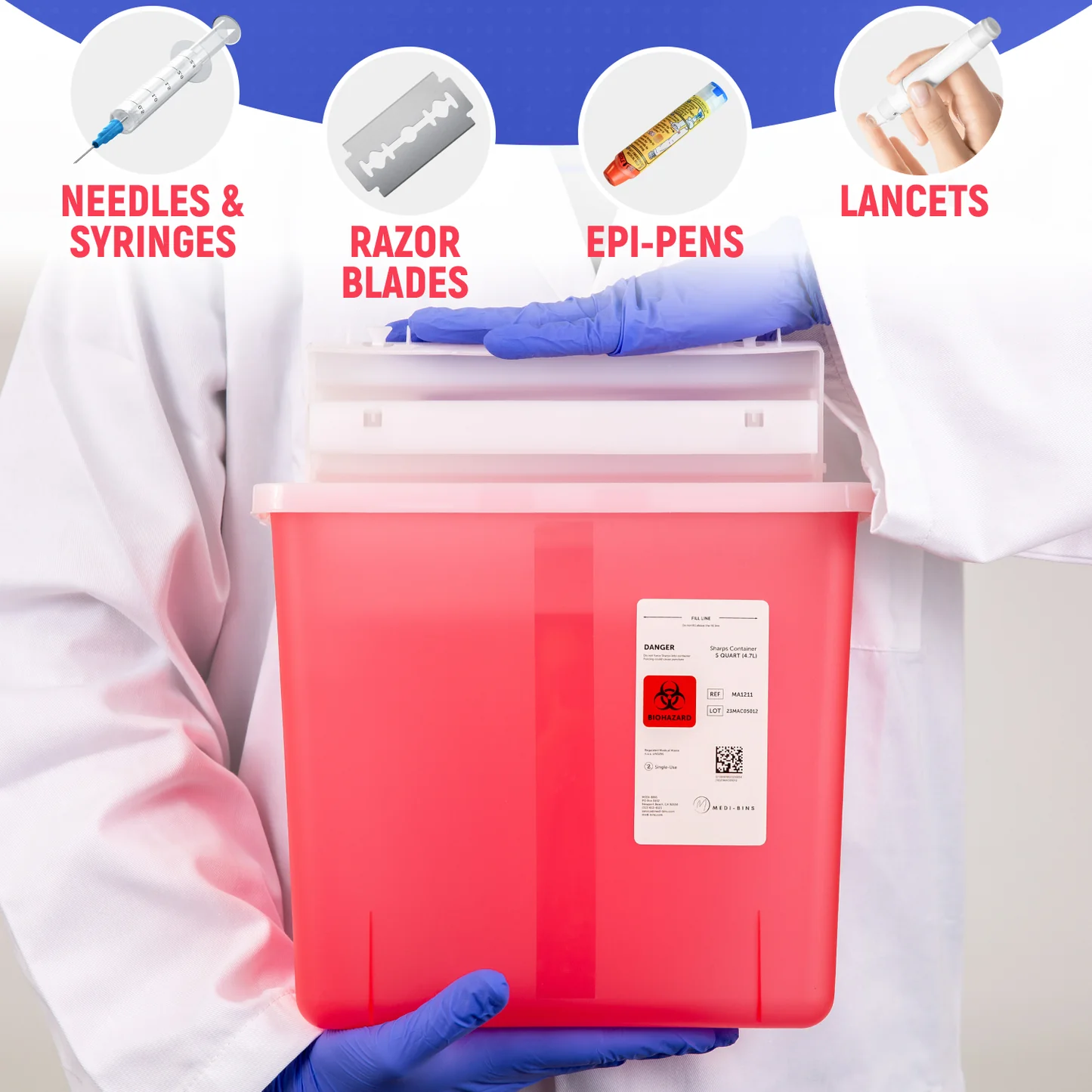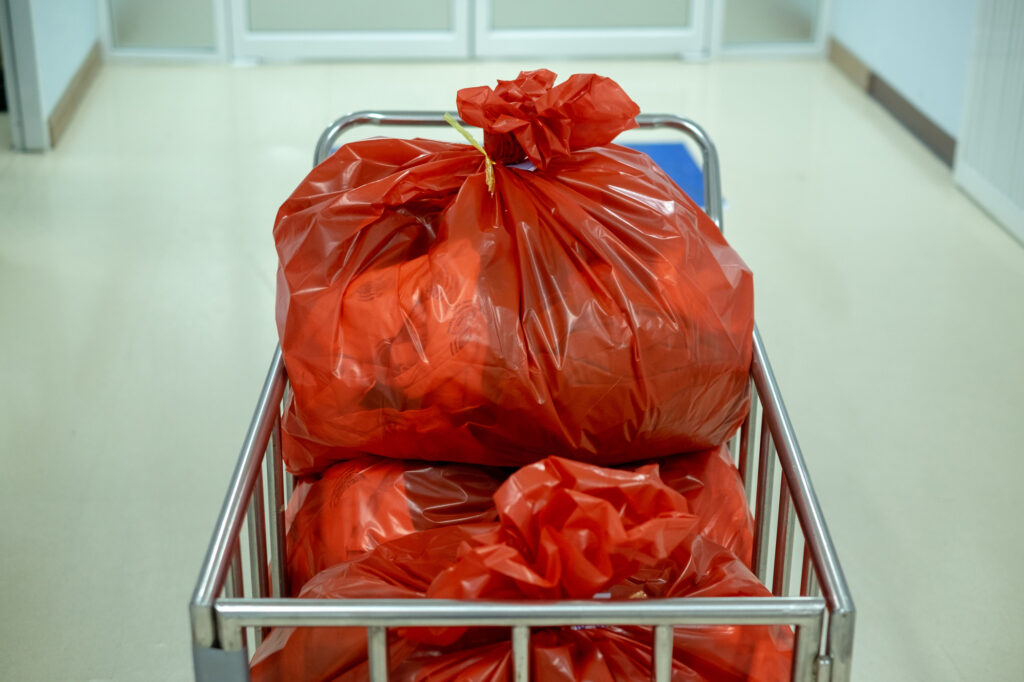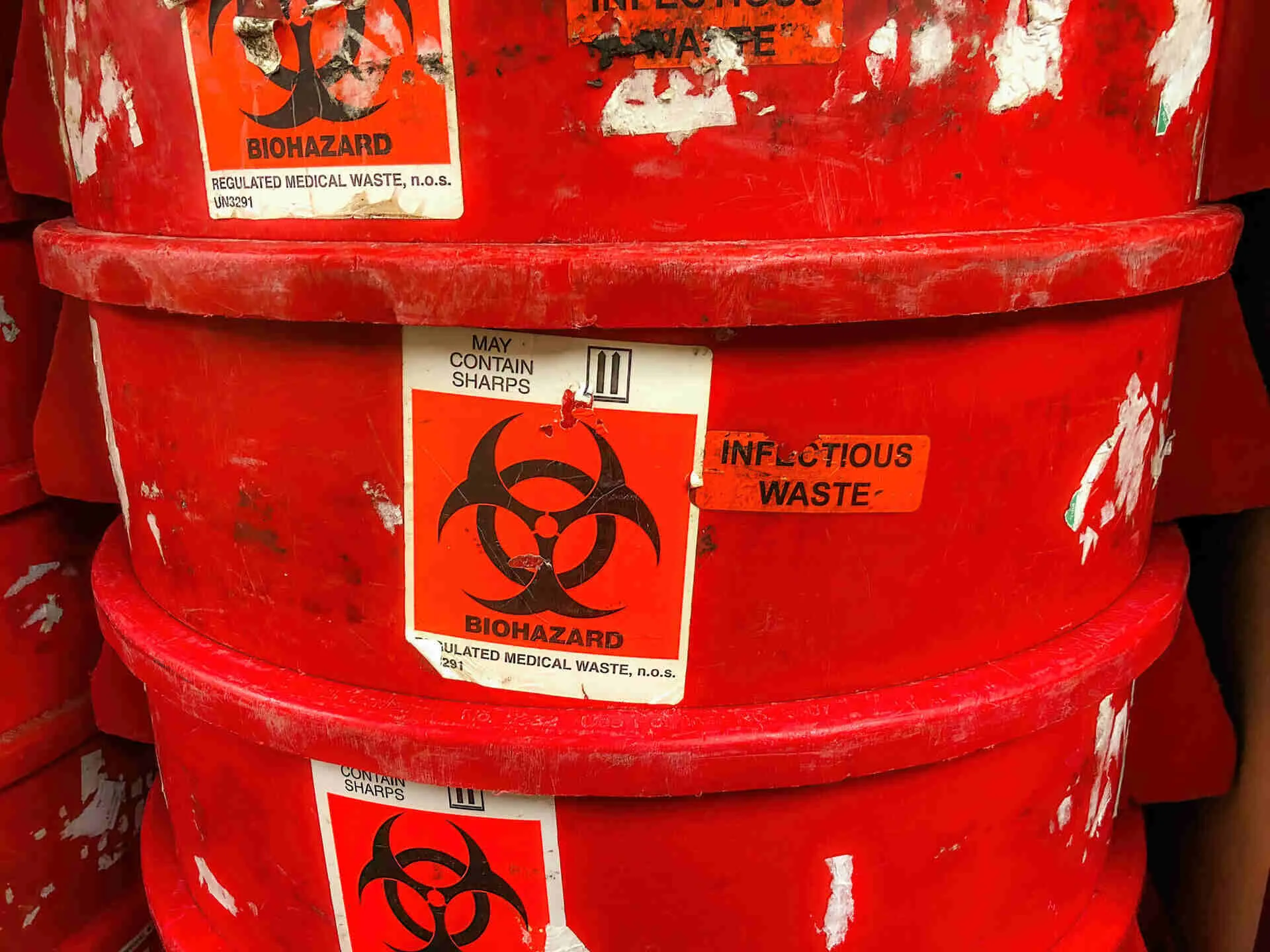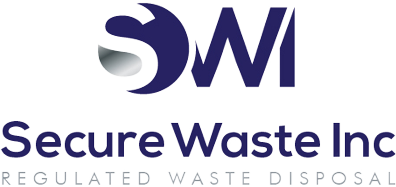Secure Sharps Disposal: Your Guide to Medical Waste Disposal
Proper medical waste disposal is crucial for every healthcare facility, from large hospital systems and surgical centers to small clinics, dental practices, and long-term care facilities. A secure sharps removal program protects patients, staff, visitors, and the community from needle stick injuries and infections that can transmit serious bloodborne pathogens including Hepatitis B, Hepatitis C, and HIV. It also ensures compliance with complex regulations at federal, state, and local levels, while implementing environmental safeguards that protect communities and ecosystems from contamination.
This comprehensive guide outlines key factors in choosing a sharps disposal partner for healthcare waste management, including OSHA and HIPAA compliance requirements, sustainable practices that reduce environmental impact, and secure waste handling protocols that protect all stakeholders from harm.
Assessing Your Sharps Disposal Process
Before selecting a disposal partner or making changes to your program, evaluate your current sharps waste practices thoroughly to identify strengths and gaps. Ask critical questions: How are sharps and syringes currently discarded by clinical staff? Are containers conveniently located at points of use where sharps are generated, or do workers need to walk across rooms with exposed needles? Are all types of sharps including needles, lancets, scalpels, suture needles, and broken glass covered by your disposal protocols?
Understanding how quickly containers fill based on patient volume and procedures, and the total volume of sharps generated across all departments, is essential for right-sizing your program. A safe practice recommended by infection control experts is to place rigid, puncture-resistant sharps boxes within arm’s reach in exam rooms, pharmacies, treatment areas, laboratories, and anywhere sharps are used, to encourage immediate disposal without walking or passing sharps to others.
Having adequate container capacity and strategic positioning helps prevent temporary storage of loose sharps in procedure areas, a common risk factor for injuries documented in incident reports. When sharps must be carried any distance before disposal, injury risk increases dramatically. Additionally, containers that are difficult to reach, positioned too high or too low, or blocked by equipment discourage proper disposal and lead to unsafe improvisation.
Checklist: Evaluate Your Current Program:
Identify all sources of sharps waste including inpatient units, emergency departments, laboratories, outpatient clinics, procedure rooms, dialysis units, and any other areas where injections, blood draws, or surgical procedures occur. Create a comprehensive inventory to ensure no areas are overlooked.
Check if staff use designated sharps bins consistently by observing practices during different shifts and in different departments. Interview staff about barriers to proper disposal and identify workflow issues that prevent compliance.
Measure how quickly sharps bins reach three-quarters full in different locations to optimize pickup schedules and container sizes. High-volume areas may need larger containers or more frequent replacement to prevent overfilling.
Review any incident reports of needle-sticks or overfilled bins from the past several years to identify patterns, high-risk locations, and contributing factors. Analyze whether incidents correlate with specific times, procedures, or staff shortages.
Verify your existing disposal partner’s services including pickup frequency, tracking and documentation systems, container options, staff training and guidance provided, responsiveness to concerns, and alignment with your facility’s values and needs.
Expert Tip:
Change sharps containers before they reach the full mark to maintain safety margins. OSHA guidelines explicitly recommend replacing bins at or before the fill line to avoid overfill situations and injuries that occur when workers attempt to force additional sharps into full containers. Training staff on early replacement protocols and keeping spare bins readily available in supply rooms can dramatically reduce puncture risks and create a culture of proactive safety.
Sustainable Sharps Disposal Practices
Sustainable waste practices are increasingly important for healthcare facilities committed to environmental stewardship and reducing their ecological footprint. Hospitals generate significant waste volumes that impact communities and the environment. For example, U.S. hospitals collectively produce over 14,000 tons of waste daily, representing an enormous burden on landfills and waste treatment facilities. Healthcare contributes approximately 4.4% of global carbon dioxide emissions, making it a significant factor in climate change that the industry must address through various strategies including waste reduction.
Switching from single-use disposable sharps containers to reusable containers represents one of the most impactful sustainability interventions available. Studies show converting to reusable sharps bins reduced one health system’s annual sharps-related carbon footprint by 65%, while simultaneously eliminating over 50 metric tons of plastic waste that would otherwise go to landfills or incinerators. In practical terms, durable containers manufactured from robust materials that can be autoclaved and re-used hundreds of times over many years greatly shrink landfill volume and reduce the environmental burden of waste disposal.
Some facilities report up to 84% fewer greenhouse gas emissions from sharps containment operations by using reusable containers compared to single-use disposal. This dramatic reduction comes from eliminating manufacturing of disposable containers, reducing transportation frequency through container return programs, and avoiding landfill methane emissions from plastic decomposition.
When choosing a waste management partner, actively look for sustainable waste options including reusable sharps bins with proven sterilization protocols, comprehensive recycling programs for non-contaminated materials, or clean-energy treatment methods that reduce emissions. For example, advanced technologies like medical waste pyrolysis can reduce disposal volume by 75% through thermal decomposition and lower emissions by over 90% compared to traditional incineration, while still achieving complete pathogen destruction.
Even simple steps like lightweight container design that reduces transportation fuel consumption and well-organized return programs that optimize logistics help substantially. A 250-bed hospital trimmed approximately 13 tons of waste annually just by reducing container weight and optimizing container sizing, demonstrating that multiple small improvements accumulate into significant impact.
A green-minded waste partner will help you meet carbon-reduction goals and social responsibility commitments, and will likely provide detailed environmental impact reporting that quantifies your progress. This data supports your facility’s sustainability initiatives, helps with environmental certifications like LEED or Practice Greenhealth recognition, and demonstrates commitment to stakeholders.
Regulatory Compliance: OSHA and HIPAA
A compliant sharps program must meet strict OSHA regulations and respect patient privacy rules under HIPAA to avoid penalties and protect all stakeholders. Under OSHA’s Bloodborne Pathogens Standard (29 CFR 1910.1030), facilities must use sharps containers that meet specific design criteria: puncture-resistant construction that prevents needles from penetrating, leak-proof design that contains fluids, and closable with secure lids that prevent spillage during transport.
Containers should display clear biohazard labels with the distinctive orange-red symbol and text warnings, and include overfill prevention markers that indicate when replacement is needed. OSHA also requires placing sharps containers as close as feasible to the immediate area where sharps are used, essentially at the point of generation, and replacing them when close to capacity rather than waiting until completely full.
Beyond container specifications, OSHA mandates comprehensive worker training on bloodborne pathogen hazards, exposure control plans that document procedures and responsibilities, availability of Hepatitis B vaccination for at-risk employees, and post-exposure evaluation and follow-up for any incidents. Facilities must maintain detailed records of training, vaccinations, and exposures for regulatory compliance and continuous improvement.
In addition to OSHA requirements, consider HIPAA obligations carefully. While HIPAA mostly governs patient information privacy, it mandates secure disposal of any protected health information (PHI) that may accompany medical waste. This means you cannot simply toss documents, patient labels from specimen containers, or other materials with PHI into unsecured trash or dumpsters where unauthorized individuals could access them.
Ensure your waste management partner securely handles any patient data that may appear in documentation accompanying waste manifests, on bin labels if they identify specific patients, or in any records associated with waste disposal. The vendor should follow policies that render PHI irretrievable through shredding, pulping, or other approved destruction methods. A reputable disposal service will train its staff in HIPAA-safe disposal procedures, provide written procedures documenting their compliance approach, and sign Business Associate Agreements accepting legal responsibility. This adds another layer of security for your organization and reduces liability exposure.
Tracking and Documentation
Maintain complete visibility into every stage of waste disposal from generation through final treatment to ensure accountability and facilitate audits. Federal and state laws often require tracking of medical waste shipments via manifests or electronic tracking systems that document the chain of custody. A good waste partner will provide comprehensive chain-of-custody documentation for your sharps waste, typically using barcoded labels or RFID tags on containers and digital records that track each container’s location and status.
This traceability allows you to confirm that waste was picked up on schedule, transported safely under DOT regulations, and treated properly at licensed facilities. It also simplifies audits and inspections by regulators from OSHA, EPA, or state health departments by providing clear documentation of compliance. Make sure your sharps bins are clearly labeled as regulated medical waste with appropriate hazard symbols, and that manifests are completed accurately at each pickup with driver and facility representative signatures.
Detailed reports and certificates of disposal or destruction demonstrate OSHA and EPA compliance to stakeholders including administrators, accreditation surveyors, insurance carriers, and oversight agencies. Modern electronic tracking systems can provide real-time visibility into waste operations, alert you to missed pickups or container capacity issues, and generate compliance reports automatically.
Choosing a Sharps Waste Partner
When selecting a secure waste removal partner, use a clear, comprehensive checklist of criteria to evaluate vendors objectively. Your provider should specialize in healthcare waste management and meet all regulatory and quality standards required in your jurisdiction:
Regulatory Compliance: The provider must be fully licensed for medical waste disposal in your state and any other jurisdictions where they operate, and follow all applicable OSHA, EPA, and DOT regulations. Request proof of licenses, permits, and insurance coverage. Verify they have no recent violations or enforcement actions.
Container Options: Check that they offer a range of sharps containers in various sizes from small countertop models to large floor units, different materials including disposable and reusable options, and specialty containers for specific applications like chemotherapy sharps. Flexibility ensures you can match containers to each location’s needs.
Pickup Frequency: Can they schedule regular pickups based on your actual waste generation volume rather than forcing you into rigid schedules? Flexible routing avoids both overflow situations and unnecessary costs from picking up partially full containers. On-call pickup availability for unexpected volume spikes is valuable.
Tracking Systems: Ensure they use modern electronic tracking for manifests and waste containers rather than relying solely on paper records. Ask for sample reports or request a demonstration of their real-time visibility systems. Transparency through technology builds trust and simplifies compliance.
Staff Training Support: Does the company offer on-site training sessions or guidance materials on safe sharps handling for your employees? Educational resources including posters, videos, and competency assessments add value. Some vendors provide continuing education credits for healthcare professionals.
HIPAA-Safe Procedures: Confirm their handling of any patient information and written commitment to secure documentation through Business Associate Agreements. Ask about their staff training on privacy, physical security measures, and data breach protocols.
Sustainability Initiatives: Inquire about their environmental policies including container reuse programs, emissions reduction efforts, clean-treatment methods, and sustainability reporting capabilities. Partners who share your values create stronger long-term relationships.
References and Expertise: Look for reviews, testimonials, or case studies from similar healthcare settings. An experienced partner will understand clinical workflows, regulatory requirements, and operational challenges specific to healthcare. Long-term clients and low turnover indicate quality service.
Pricing Transparency: Request detailed pricing that itemizes container costs, pickup fees, treatment charges, and any additional fees like fuel surcharges. Avoid vendors with hidden costs or long-term contracts that lock you in regardless of service quality.
Customer Service: Evaluate their responsiveness to questions, flexibility in accommodating your needs, and problem-solving approach. Speak with current clients about their satisfaction levels.
Conclusion
Safe, compliant sharps waste disposal is essential for modern healthcare operations and represents a fundamental aspect of quality patient care and workplace safety. By thoroughly assessing your current practices to identify improvement opportunities, emphasizing sustainability through reusable containers and emissions reduction, and ensuring both OSHA and HIPAA compliance through proper procedures and documentation, you can strengthen safety for staff and patients while reducing environmental impact.
Choosing a knowledgeable medical waste disposal partner, one equipped with reusable containers that reduce environmental burden, advanced treatment options that minimize emissions, and robust tracking systems that ensure accountability, lets your clinical team focus on patient care while resting assured that sharps are handled responsibly from generation through final destruction.
For expert guidance on secure sharps disposal and comprehensive medical waste management services, learn how Secure Waste can help you meet safety and sustainability goals while maintaining full regulatory compliance.

Expert Medical Waste Management: With over 25 years of industry experience, Secure Waste is a trusted local leader in hazardous and biohazardous waste disposal across Maryland, Virginia, and Washington, D.C. Specializing in medical waste management, sharps needle disposal, and biohazard waste removal, the company ensures full compliance with federal, state, and local regulations while prioritizing environmental sustainability.
The company also offers additional services, including secure document shredding and sharps container sales, providing comprehensive solutions for healthcare facilities and businesses. Our cost-effective services help clients maintain regulatory compliance without unexpected costs.
With a commitment to customer satisfaction, Secure Waste offers tailored waste management plans that align with industry best practices. Their team of experts provides reliable, timely, and compliant services, making them the preferred choice for medical waste disposal. For a free waste quote or more information, visit www.securewaste.net






